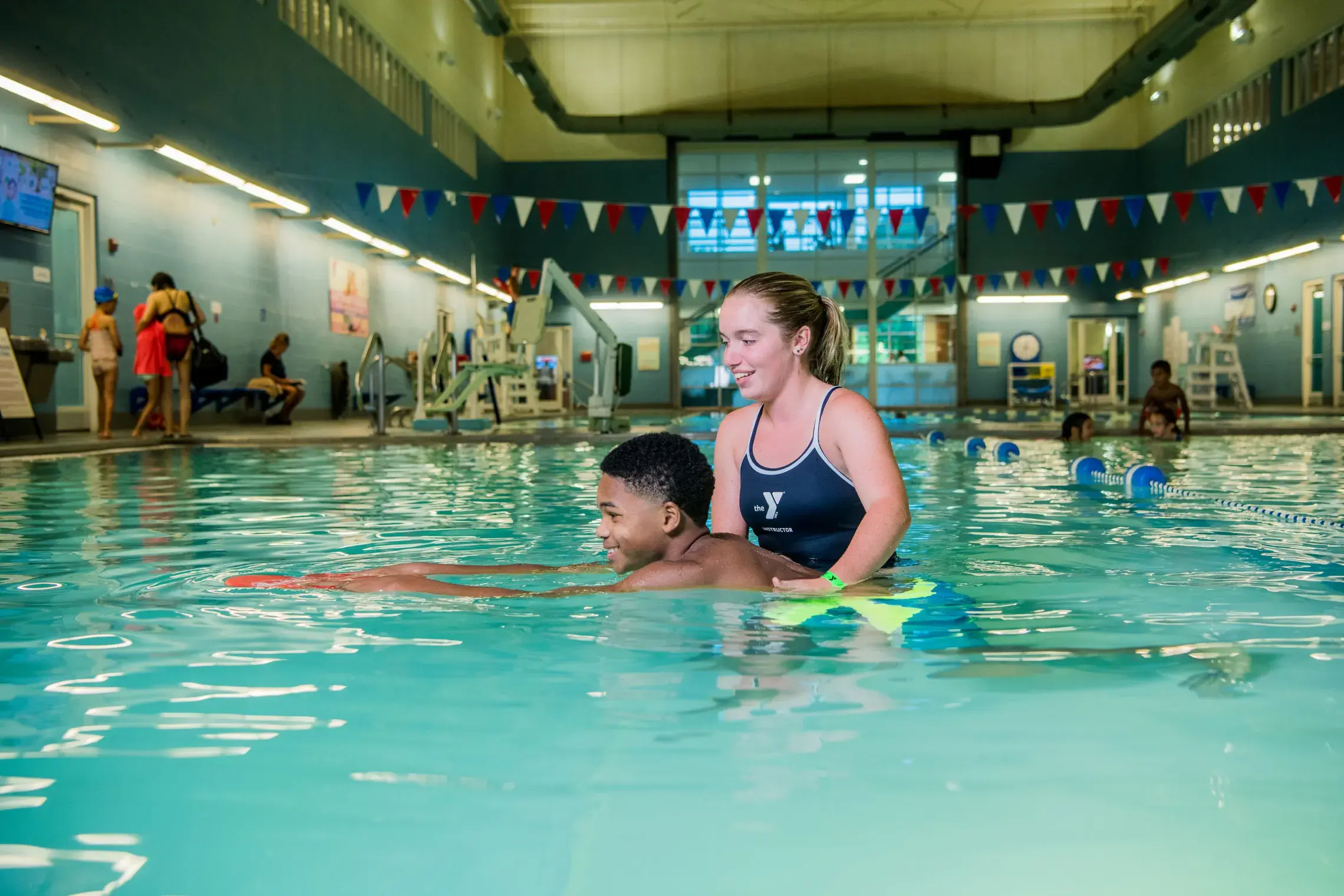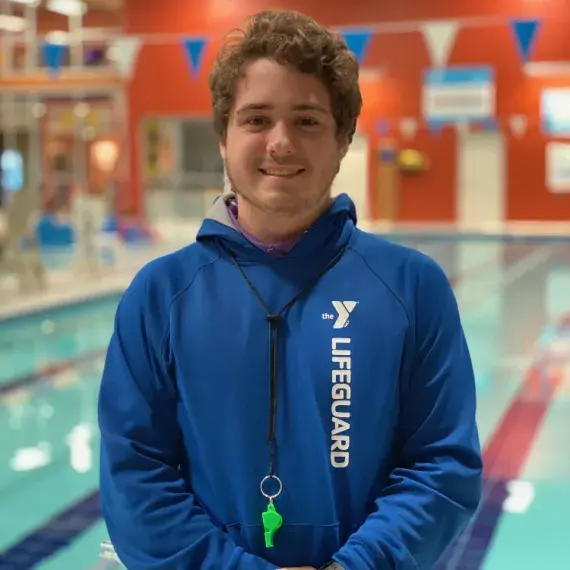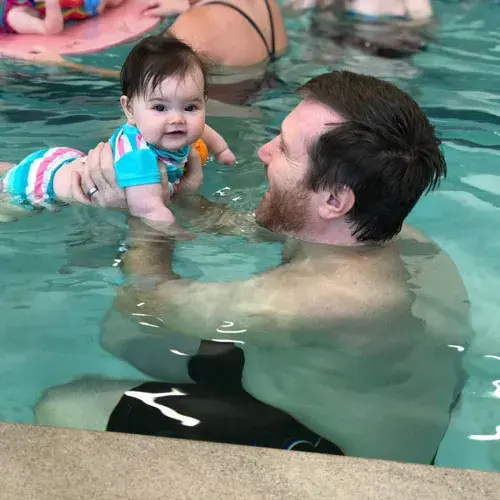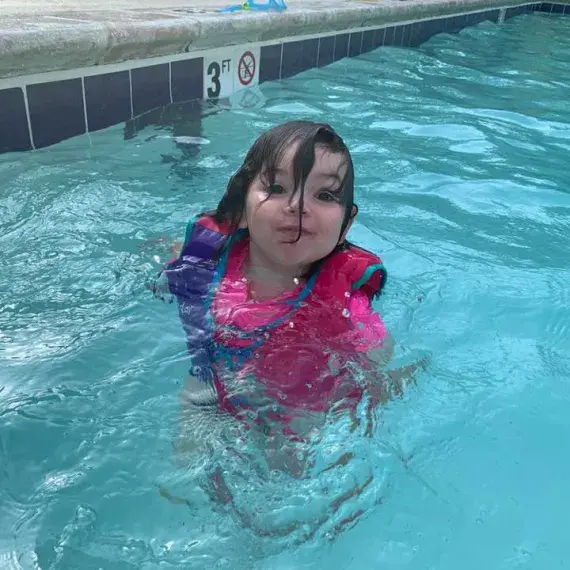YMCA swim lessons aren’t just about mastering the front stroke or holding your breath under water—they’re about teaching the importance of water safety. Drowning is the second-leading cause of death for kids ages 1-14. The Center for Disease Control also notes that non-fatal drowning injuries can cause severe, life-long brain damage.
At the Y, we believe that no child should be at risk of drowning because they didn’t learn to swim.
Every year in Middle Tennessee, the Y serves over 10,000 youth in swim lessons, including over 1,200 elementary students in underserved communities through Learn to Swim.
Dakota Meyer is both a lifeguard and swim instructor at the North Rutherford Family YMCA. He sees the value of water safety on a daily basis. Here are three water safety lessons he helps kids learn at the Y.
1. Asking permission
“The first key lesson I always try to teach my swimmers is to ask permission before getting in the pool,” he says. “Asking for permission is important no matter the child’s age. It teaches them that an adult must be present around any body of water.”
By enforcing the “ask permission” rule, the Y not only instructs kids about the potential dangers of water, but also encourages parents to be engaged and attentive to their child.
2. Learning to float on your back
The second lesson is a very practical tool. Floating teaches children how to rest in the water if they get tired, which helps prevent drowning.
“At the end of their swim lessons, I measure the swimmer’s success by asking what the most important rule is (getting permission to enter the water) and seeing how long they can float without help,” Dakota says.
Water safety lessons evolve as kids get older, of course, but the basics remain the same. For example, teaching kids to float turns into teaching youth, teens and adults how to tread water for an extended period of time.
3. Swim, float, swim
With older participants, the third lesson—swim, float, swim—comes into play. Swimmers are taught to rest until they have enough energy to keep swimming. This sequence starts with rolling from a front glide on your stomach into a back float, and then rolling back onto your stomach once you’re ready to continue. This, at any age, can save a life.
A STORY OF OUR OWN
We hear stories every day of youth gaining confidence and life-saving skills in swim lessons. One of them comes from our own staff.
Kayla Buckner works for the YMCA’s marketing team, and she’s a parent. Her daughter, Brita, started in swim lessons when she was just six months old. Kayla and her husband, Ben, wanted Brita to develop a positive mindset around water.
“We strongly believe that our choice to get her in lessons as an infant built the foundation for a lifetime of enjoyment around the water. As a toddler, she loved swimming so much that we had to bribe her to get out of the pool.”
Kayla says that it was important to make sure their “fearless” daughter knew how to be safe: “Her fearlessness around water was incredible, but also scary as a parent. Kids see a pool or a lake and just want to jump in—but they don’t see the dangers. A child can drown in literally seconds.”
Now, Brita is three years old and has taken another round of swim lessons. Asking for permission before entering the water is just one of the skills she has picked up from the Y.
“I know it sounds so simple,” Kayla says, “but establishing that rule as a young child can save a life. [Brita] has always been confident when it comes to the water, but swim lessons have made her more aware.
"It’s hard to be a three-year-old in a bathing suit standing 10 feet from a pool that you can’t jump into because mom’s being slow. But, she now knows that she has to wait for me to be engaged and give her the green light. I thank the Y for that!”
Learn More About Swim Lessons
The YMCA offers lessons for kids as young as six months, teens and adults in both private and group lessons. It’s never too late to learn how to swim. Find out more



